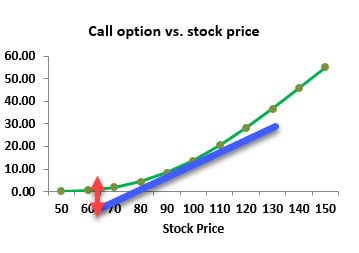Unusualskill
Member
Hi David,
This is GARP Practice Exam 2017 Q36.
Bank A and Bank B are two competing investment banks that are calculating the 1-day 99% VaR for an at-the- money call on a non-dividend-paying stock with the following information:
• Current stock price: USD 120
• Estimated annual stock return volatility: 18%
• Current Black-Scholes-Merton option value: USD 5.20
• Option delta: 0.6
To compute VaR, Bank A uses the linear approximation method, while Bank B uses a Monte Carlo simulation method for full revaluation. Which bank will estimate a higher value for the 1-day 99% VaR?
A. Bank A
B. Bank B
C. Both will have the same VaR estimate
D. Insufficient information to determine
May I ask why linear approximation method(delta normal) will always give higher VaR than Monte Carlo? Thx!
This is GARP Practice Exam 2017 Q36.
Bank A and Bank B are two competing investment banks that are calculating the 1-day 99% VaR for an at-the- money call on a non-dividend-paying stock with the following information:
• Current stock price: USD 120
• Estimated annual stock return volatility: 18%
• Current Black-Scholes-Merton option value: USD 5.20
• Option delta: 0.6
To compute VaR, Bank A uses the linear approximation method, while Bank B uses a Monte Carlo simulation method for full revaluation. Which bank will estimate a higher value for the 1-day 99% VaR?
A. Bank A
B. Bank B
C. Both will have the same VaR estimate
D. Insufficient information to determine
May I ask why linear approximation method(delta normal) will always give higher VaR than Monte Carlo? Thx!

